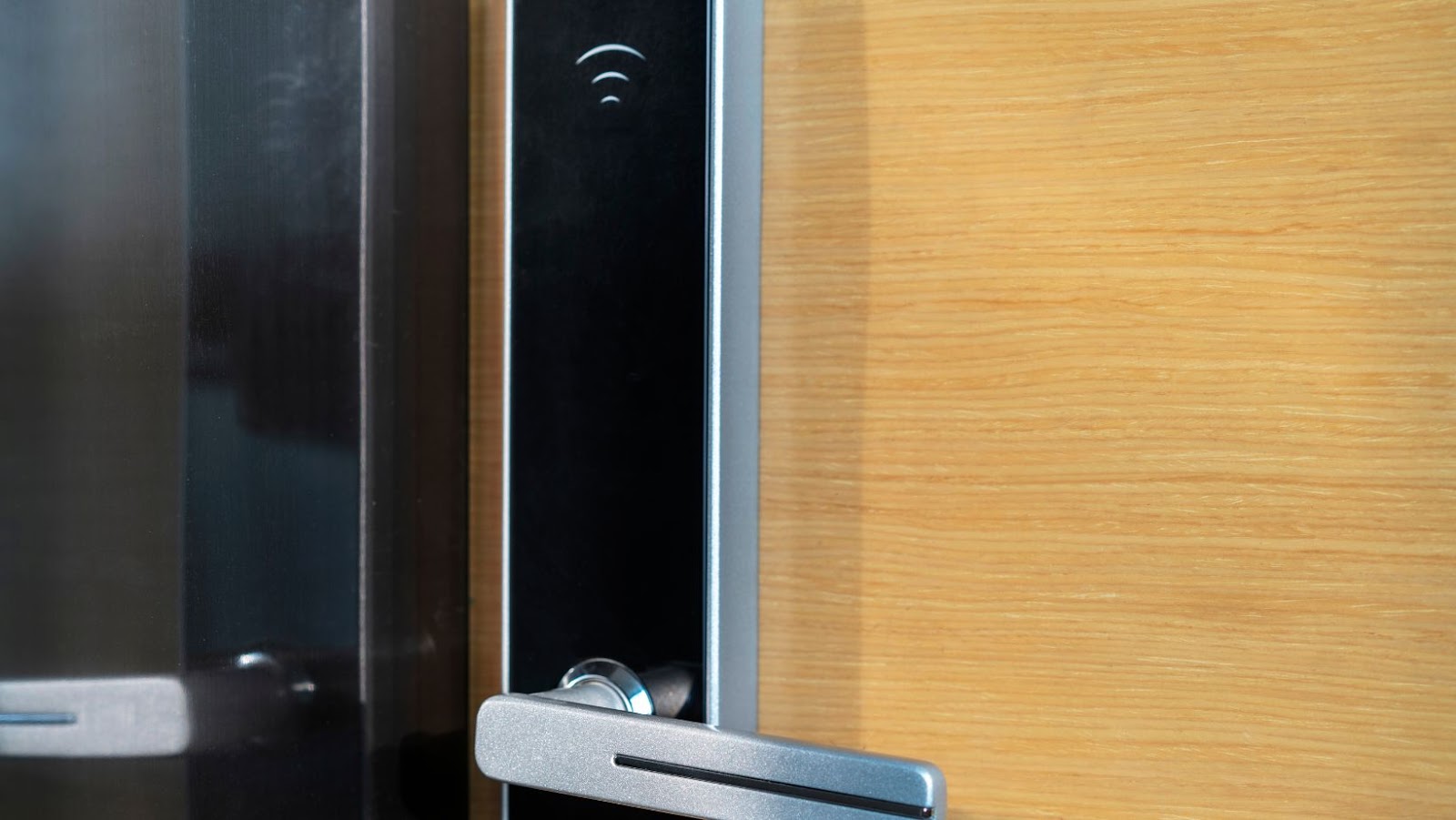Level Home recently announced its acquisition of Dwelo, a fellow smart home startup. This acquisition is great news for the smart home industry and testament to the amazing technology that dwelo has developed.
However, the challenge remains for Level Home to integrate the technology from Dwelo into its existing platform. Therefore, this article will explore the various ways in which Level Home can successfully integrate the Dwelo technology into their own:
Level Home Acquires Fellow Smart Home Startup Dwelo
Level Home and Dwelo are two prominent industry players in the rapidly growing home IoT (Internet of Things) market. As partners, their goal is to build a comprehensive solution that automates, simplifies, and makes home life more convenient for people. This new system is integrated with all home devices, including lights, locks, sensors, thermostats, and more.
To deliver on this promise to their customers, Level Home and Dwelo must operate on an intricate system of various technologies that must be properly integrated. This process can be extremely complicated due to the range of protocols and standards associated with the various types of devices. Therefore implementing such a complex system poses numerous challenges including but not limited to:
- Authentication
- Access control security protocols
- Installation processes
Challenges of Integrating Dwelo’s Technology
Level Home’s recent acquisition of the fellow smart home startup Dwelo has presented many new challenges. Both companies have unique technology and approaches to the smart home industry, and integrating the two is no easy feat.
In this article, we will discuss some of the biggest challenges associated with integrating Dwelo’s technology into Level Home’s existing solutions:
Compatibility Issues
Integrating Dwelo’s technology can pose many challenges, particularly when it comes to compatibility issues. With a multitude of different devices and systems involved, the process of creating a cohesive system is often arduous and time-consuming. In addition, language and protocol barriers must be addressed to create an efficient integration process.
The ability for Dwelo’s systems to integrate with other existing technologies is possible, as long as the necessary compatibility criteria are met. However, depending on the existing infrastructure, adaptations may be needed to ensure successful integration. Therefore, it’s important to have a clear timeline and plan to correspond with challenges such as backward compatibility and language barriers.
To combat these challenges, Dwelo’s tech team needs to be aware of their options in terms of system architecture and involving third-party technologies such as middleware or API brokers. For example, API brokers have become popular solutions for helping with cross-language communication problems while utilising shared components where possible can be useful in cases where backward compatibility is proving difficult during integration process. In addition, identifying any areas that need more attention or optimization can help set up successful integrations quickly and efficiently every time. Many companies also provide training programs or support services designed specifically towards helping new users get up-to-speed with Dwelo’s technology quickly so they can immediately begin work on integrating into their existing systems.
Security Concerns
As with any new technology, security concerns are one of the biggest challenges when integrating Dwelo’s technology. As it is an IoT platform, having a secure connection between devices and the cloud is essential. Security measures such as authentication, cryptographic algorithms and authentication protocols are essential in reducing the attack surfaces. In many of its systems, Dwelo implements two-factor authentication (2FA) for added security and encrypts data using government-grade encryption algorithms to ensure unauthorised access does not occur.

Besides securing communication between components of its system, Dwelo also implements various measures to protect user data and privacy. This includes ensuring that sensitive user information such as location or payment information are stored securely under GDPR or PCI compliance regulations. By implementing various layers of protection, Dwelo can ensure its platforms remain trusted sources for users’ sensitive information and that vulnerabilities are kept to a minimum.
Regulatory Compliance
The first challenge with integrating Dwelo’s technology is ensuring the platform functions within all applicable laws and regulations, such as those related to privacy and data collection. Depending on the local jurisdiction, there can be different requirements for how data is secured, stored, and reported. For example, California has several laws related to data collection, such as the California Consumer Privacy Act (CCPA). As a result, companies must ensure their use of technology meets these legal requirements or risk facing fines or penalties.
In addition to compliance with various laws and regulations in individual jurisdictions, companies may have internal policies and procedures for dealing with members’ data. When creating a secure integration leveraging Dwelo’s technology platform, these possible rules must be considered. Therefore, it is important to carry out proper due diligence and establish systems that will comply with current regulations and meet any future regulatory changes that may be introduced.
Finally, companies must also protect customer information from potential attacks or sabotage by malicious actors. Establishing access protocols, such as two-factor authentication processes or advanced password protection schemes, can go a long way in safeguarding customer accounts from external interference. Furthermore, additional security measures must be implemented to protect customers’ financial information when it is being handled on the platform during transactions.
Strategies for Overcoming Challenges
When Level Home acquired fellow smart home startup Dwelo, they inherited a wide range of technology assets. However, integrating these assets into their existing platform presented a unique challenge to the development team as there were not only technical differences between the two platforms, but also differences in how the systems were structured and how data was handled.
In this article, we will take a look at the strategies to overcome the challenges of integrating Dwelo’s technology:
Establishing a Comprehensive Integration Plan
When integrating new technology into existing systems, it’s important to have a comprehensive plan. Without a well-defined, step-by-step approach to integration, you can easily become overwhelmed and miss key details. Here are some strategies for developing the most effective integration plan for your situation:
- Develop a clear timeline for all tasks required to complete the integration and assign them accordingly. Make sure each team member is aware of their responsibilities and deadline related to these tasks
- Map out any processes that may affect the new technology’s performance or availability
- Identify any potential risks associated with the technology and create contingency plans
- Assess how the installation process will impact your existing architecture, resources, and other operations
- Outline the user experience you want to provide through this new system
- Establish quality management controls before, during, and after integration is complete
- Evaluate how accurate data visualisations will be created from the obtained data once integrated
- Determine ways to ensure code integrity throughout various stages of development

Not only will a detailed integration plan help teams stay organised during transitions but it can also help prevent disruptions or failures that could impact customer experiences or operational efficiency post-integration.
Utilising Automation and AI
Integrating technology platforms into existing processes can be difficult, especially when it requires a shift in workflow. Automation and AI can bring immense efficiency and help to reduce errors. Yet, some businesses are reluctant to adopt new technologies due to perceived cost of implementation or lack of understanding. To overcome these challenges, companies should assess the advantages of automation and AI in terms of cost savings and efficiency gains.
Automation (AI) Algorithms can automate repetitive manual processes, resulting in time savings and increased accuracy and consistency. Automation processes can include computer vision, natural language processing (NLP) and machine learning algorithms for efficient data input gathering, faster customer support response rates, tasks scheduling, customer engagement strategies and data analysis.
AI has revolutionised customer support services by implementing Chatbots – automated programs designed to answer user queries by quickly accessing their natural language input through NLP techniques. Chatbots provide an easy-to-use interface that customers trust more than traditional forms of communication like phone calls or emails while allowing quick resolution times with a minimum number of manual interactions necessary.
Integration within an existing workflow increases productivity by reducing the time needed for manual task operations while providing accurate results at scale with a short time frame. Additionally, having detailed analytics around customer journeys is key to identify current pain points that could benefit from automation such as customer interactions with products or online support services requiring scalable customer service practices given large volumes of tickets on Dwelo’s platform while keeping overall customer satisfaction up at the same time.
Leveraging Existing Partnerships
Leveraging existing partnerships can be an effective strategy for overcoming the challenges of integrating Dwelo’s technology. For example, companies have developed long-term agreements with partners to manage the customer sales experience; these collaborative arrangements can be leveraged to create a comprehensive solution that combines Dwelo’s world-class technology with the partner organisation’s expertise. In addition, by using existing partnerships, organisations can gain access to introductions, services and advice that would otherwise be unavailable.
Leveraging existing partnerships is advantageous because it reduces duplication of effort and accelerates product development timelines. Companies can earn interest through royalty discounts or promotion fees by partnering with well-established organisations familiar with their industry. Additionally, companies acquire an established customer base and market reach that could be challenging for new entrants. In essence, leveraging existing partnerships allows companies to tap into an existing network without reinventing the wheel or devoting scarce resources toward cultivating new relationships from scratch.

Furthermore, leveraging existing partnerships enables companies to quickly build and launch products while developing a customer base and formulating go-to-market strategies. Companies also benefit from accelerated scale due to larger partner networks; this results in better understanding of consumer requirements and improved insights when developing new solutions. Altogether, leveraging existing partnerships is an effective way for companies to cost effectively manage their integration strategies by utilising established networks rather than starting from scratch.
Conclusion
In conclusion, Level Home’s acquisition of Dwelo allows both companies to grow and excel in the rapidly-evolving smart home industry. However, there are still many challenges to overcome to combine the technologies and products of each company. Nevertheless, Level Home and Dwelo can create a powerful presence in the smart home sector with the right strategies.
Let’s look at some of the challenges that need to be addressed when integrating the two technologies:
Summary of Challenges and Strategies
In the end, the challenges of integrating Dwelo’s technology into rental apartments can be summarised in three main categories:
- Need for high-speed internet and reliable Wi-Fi
- Training for installation
- Maintaining customer expectations
By adequately addressing security concerns, providing high-speed internet and strengthening overall IT infrastructure, building owners can maximise their rental potential with Dwelo’s cutting-edge smart home solutions. Additionally, a robust training program for technicians on installation processes and customer service protocols ensures that customers are satisfied with their experience. With these considerations in mind, building owners can confidently embrace the opportunities of Dwelo’s innovative technology to increase efficiency and unleash their property’s full potential.


More Stories
A Look at the Current iGaming Sector in the UK
Personalized Professionalism: Engraved Name Tags for Every Occasion
Boost Your Website with Engaging H2H Slot Games: A SEO Strategy Guide